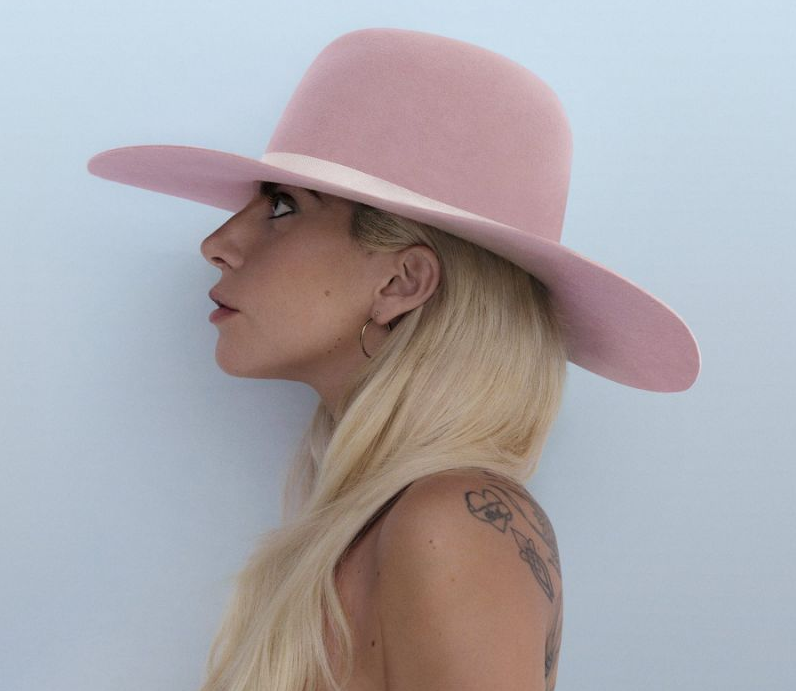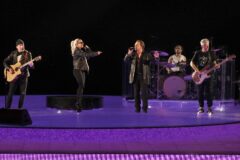Like a meat dress destined to become jerky (lest it spoil), it has long been clear that a shift in form was inevitable for Lady Gaga and her aesthetic. She blasted into pop’s stratosphere in 2008 with a force, her early career a deluge of looks, hooks, and striking videos that was as exhausting to process as it was impressive to behold. By the time the stunning McQueen-laden one-woman fashion show of “Bad Romance” rolled out in October 2009, it seemed like the most radical thing Lady Gaga could do was dress down.
At last, we have reached that moment and it’s … fine? Gaga has changed costumes to something more conventionally down-to-earth—jeans and a t-shirt, basically–and the instrumentation on her fifth album, Joanne, is more likely to be driven by guitars and live drums than her machine-generated preceding work. It’s all part of the respectability campaign Gaga launched following the artistic and commercial disappointment that was her last solo album, 2013’s ARTPOP. Since that fiasco, she tore up the Oscars stage with a show-stopping Sound of Music medley, cut a Grammy-winning jazz album with Tonny Bennett, and fostered her acting career with a lead role on American Horror Story: Hotel (which ended up netting her a Golden Globe). It’s clear that Gaga has been pointed toward the more consciously serious milieu of Joanne, gone are the house-oriented party anthems of old.
Mark Ronson, who co-produced everything on Joanne alongside Gaga and BloodPop, called the album a “very honest, authentic, kind of analog record.” It’s another plug for “authenticity” on the New Gaga that feels transparent, especially when conveyed in the typically rockist fashion that equates “real” instruments with musicianship and demotes electronic ones. Just because Joanne has fewer synthesizers doesn’t make it less synthesized, and consciously stripping back is an affectation in itself. For fans, it will take time to see if the ethos of the album is a positive, purposeful step in the new direction of Gaga’s musical career or merely a lesser work—a collection of the oddball, non-house songs that she’s been spicing her albums with for years. (The Fame Monster’s “Teeth,” Born This Way’s “You & I,” and ARTPOP‘s “Dope,” for example.)
Still, Joanne‘s pretension is much more tolerable than ARTPOP‘s, an album that bogged itself down with its own label. Joanne seems more invested in blurring distinctions than drawing them out with pomp. With its deliberate stomp and gibberish call-and-response hook, “John Wayne” sounds like it was born as tropical house and was later fitted in a rock-country drag. The Beck-assisted masturbation paean “Dancin’ in Circles” owes as much to white-girl reggae aspirations as it does to Gaga’s own “So Happy I Could Die,” or even “Alejandro.” And Joanne‘s underperforming first single “Perfect Illusion” ports over the house-power ballad template of “Bad Romance,” shifting dynamics (less house more power) and adding a heaping amount of shrillness so that when it’s all built up by the end, the song is practically screaming at you.
“Perfect Illusion” is Joanne‘s rare example of the worst tendencies of Gaga’s music, which on Born This Way and ARTPOP became so compressed that every song was delivered as a dense musical brick. Joanne, in contrast, gives Gaga’s voice room to breathe. She’s never sounded more matter of fact than on the arpeggiated folk of album’s title track, an ode to her father’s sister whom she was named after—there’s a moment toward the beginning of “Joanne” in which her voice wavers and turns dry on at the end of the word “you,” like a leaf that just started to die. Similarly intimate moments register throughout–especially on the Hillary Lindsey-co-penned country dirge “Million Reasons”–though her belting, impressive as it is, is often more reminiscent of Broadway showboating than the sort of singer-songwriter intimacy that Gaga attempts.
In an interview with the Times, Gaga contrasted the “fantasy collages” rendered by her earlier lyrics with the “clear and concise and simple way” she says things on Joanne. Indeed, her message of female solidarity on the “Benny and the Jets”-esque strut “Hey Girl” comes through loud and clear—she teams up on the duet with Florence Welch in what seems to be a refutation of the notion that all women pop stars are inherent competitors. Less successful is “Come To Mama,” an infantile plea for peace over a sanitized horn-fueled background that sounds most reminiscent of Darlene Love’s “Christmas (Baby Please Come Home).” “Everybody’s got to love each other / Stop throwin’ stones at your sisters and your brothers,” is how the song opens and it only gets worse from there. “The only prisons that exist are ones we put each other in,” says Gaga, who apparently has never encountered mental illness or quicksand. At least “Angel Down,” is oblique enough to avoid revealing itself as the Trayvon Martin tribute that it was conceived as. It could have been much heavier handed.
Gaga’s rhetoric has always been at least a little hollow—during her Monster Ball Tour, she preached the virtues of individuality to a room full of kids dressed like her. Grandly gesturing trumps the gesture’s practical implications for her brand–say anything negative about her publicly and see just how benevolent her fandom is. But as musicians are expected to be outward facing their inner workings become increasingly literalized. (To be fair, the same could be said for most of us.) It’s understandable that Joanne finds Gaga performing authenticity, if only because it’s the strongest way to convey artistic evolution to the masses in 2016. The image here—the illusion, really—is as imperfect as it is meticulously rendered.
Rich Juzwiak is a senior writer at Jezebel, and has written for Gawker, Interview, The Washington Post, and New York.





